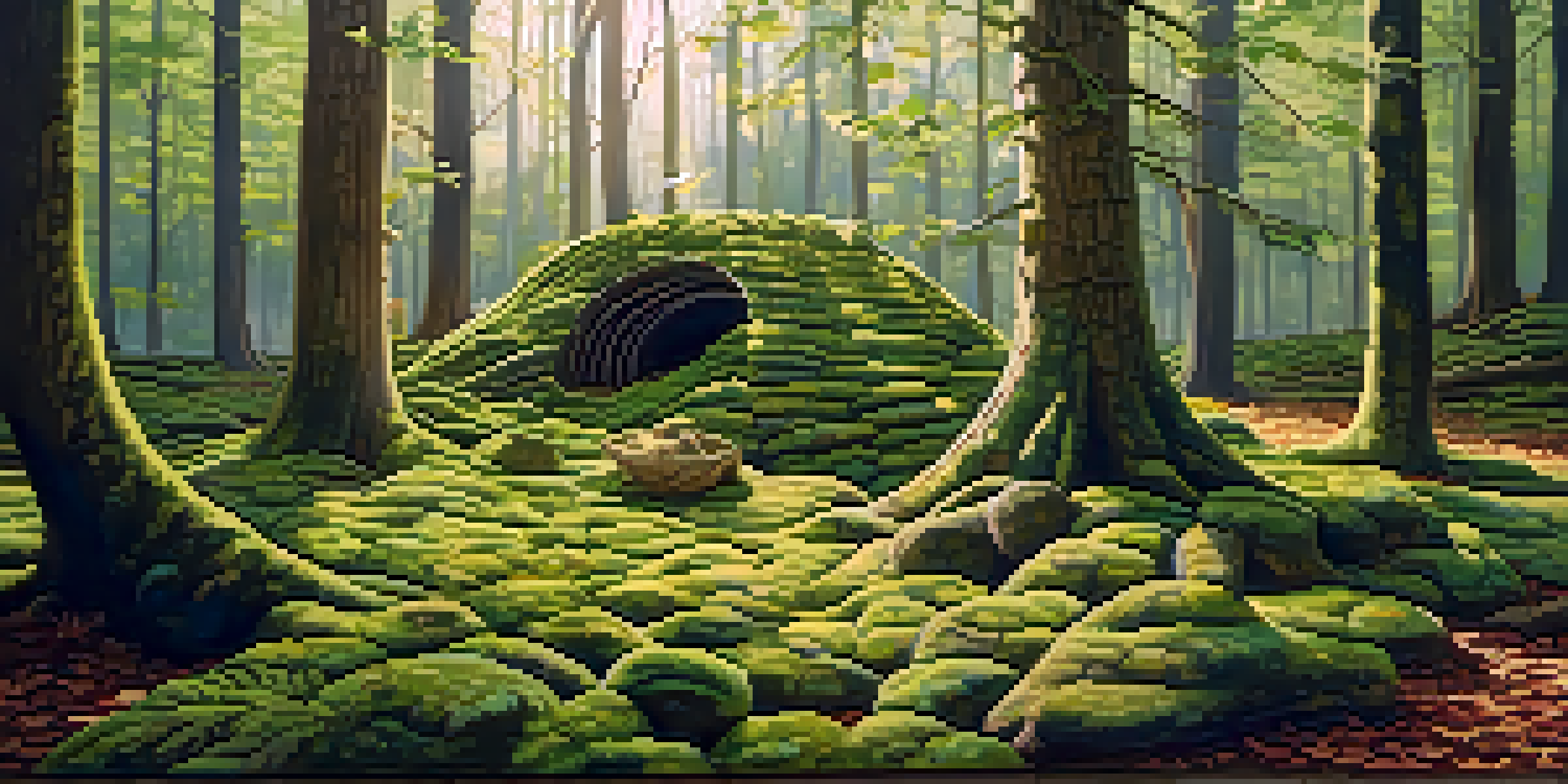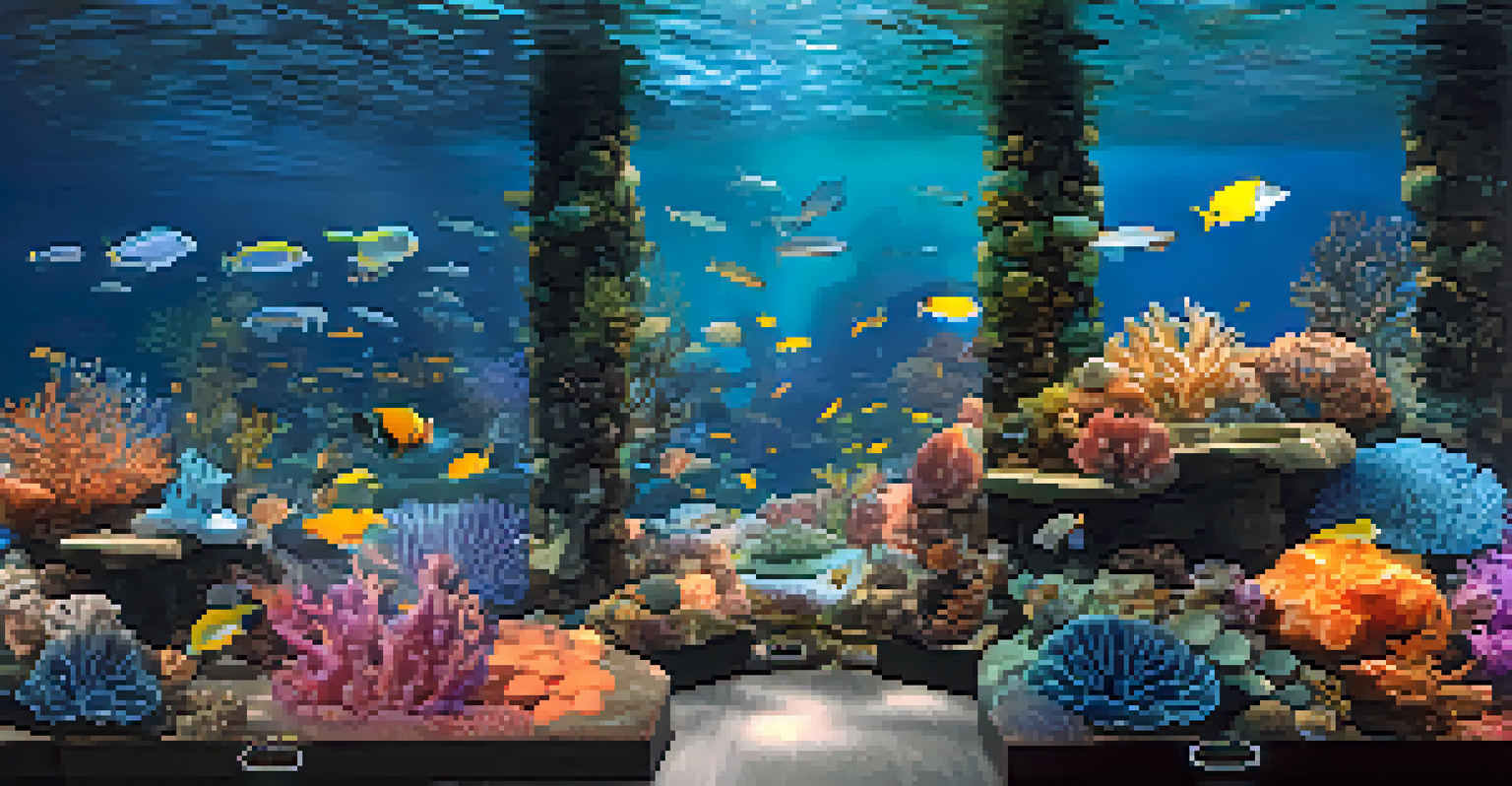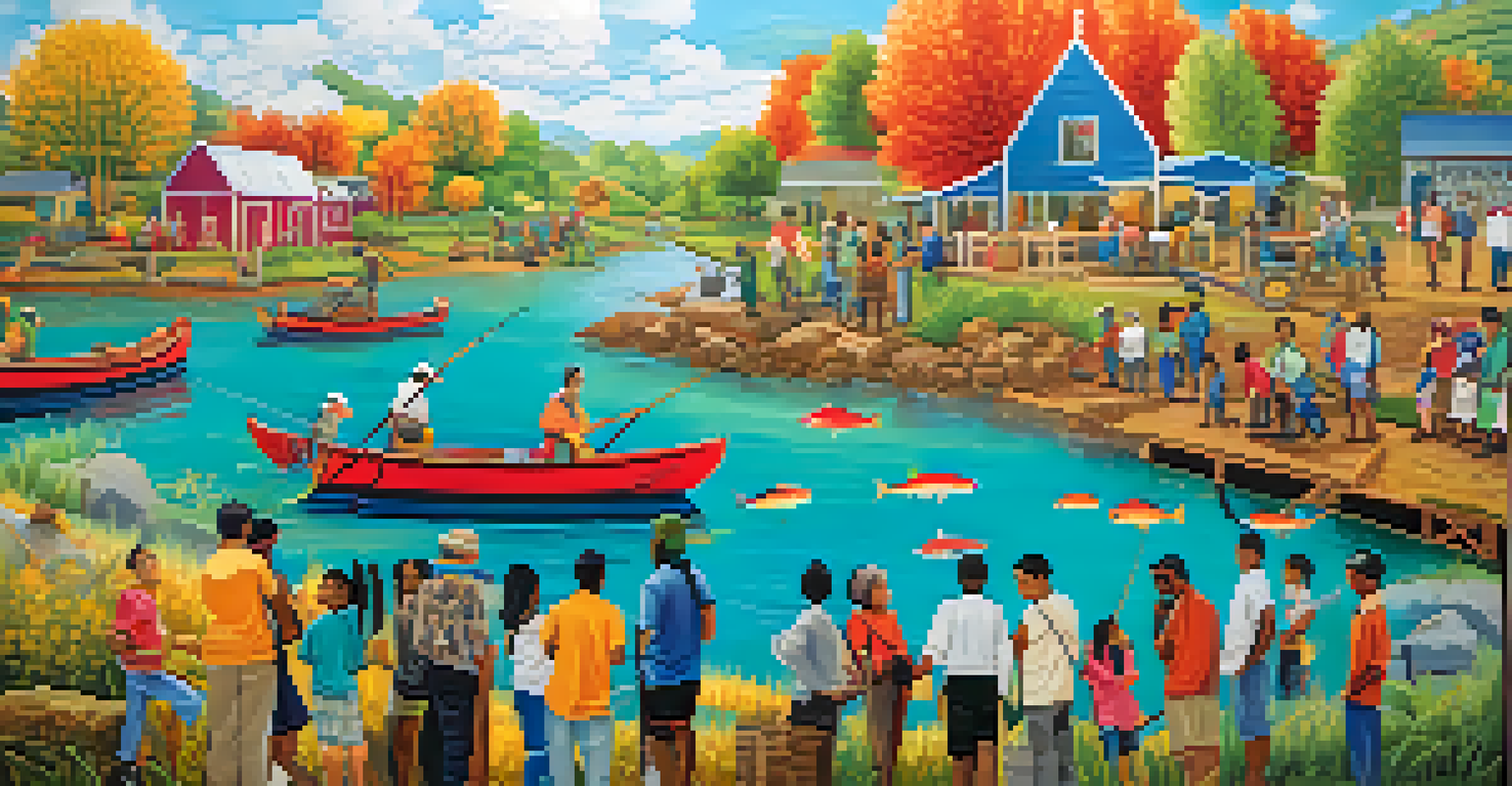The Power of Storytelling in Environmental Art Practices

Understanding the Role of Storytelling in Art
Storytelling has always been a powerful tool for communication, bridging gaps between cultures and ideas. In the realm of environmental art, it serves as a conduit for expressing complex themes about nature and sustainability. Artists harness narratives to evoke emotions, encouraging audiences to connect deeply with their work and the environment.
Art is not a thing; it is a way.
For instance, consider an installation that utilizes reclaimed materials to depict a forest. The story behind each piece not only reveals the artist's intent but also sparks conversations about waste, consumption, and conservation. By framing art within a narrative, these artists make the environmental impact tangible and relatable.
Ultimately, storytelling transforms art from mere visuals into an experience that invites reflection and dialogue. It allows viewers to see themselves in the narrative, fostering a personal connection with the environmental issues at hand.
Narrative Techniques in Environmental Installations
Artists employ various narrative techniques to create compelling environmental installations. These can include personal anecdotes, historical context, or even speculative futures that engage the audience's imagination. By weaving these elements together, they create a rich tapestry that highlights the urgency of environmental issues.

For example, an artist might use the story of a local river's pollution to illustrate broader themes of ecological degradation. This not only informs the audience but also compels them to think critically about their own relationship with nature. Such narratives can elicit strong emotional responses, motivating individuals to take action.
Storytelling Bridges Art and Nature
Narratives in environmental art create emotional connections that help audiences understand and engage with sustainability issues.
Through these techniques, artists can convey complex environmental messages in a digestible format. The combination of visual art and storytelling can lead to a more profound understanding of ecological challenges and inspire collective action.
Cultural Narratives and Environmental Awareness
Cultural narratives play a significant role in shaping how communities perceive and engage with environmental issues. Different cultures have unique stories about nature that can influence their values and practices. By integrating these narratives into environmental art, artists can honor diverse perspectives while promoting awareness.
The greatest threat to our planet is the belief that someone else will save it.
For instance, Indigenous art often reflects a deep relationship with the land and its resources. These stories can highlight sustainable practices and a reverence for nature that contemporary society can learn from. By showcasing these cultural narratives, artists not only educate their audience but also advocate for respect and preservation of cultural heritage.
In this way, storytelling becomes a bridge linking traditional ecological knowledge with modern environmental challenges. It fosters respect for diverse viewpoints and encourages a more holistic understanding of sustainability.
The Emotional Impact of Environmental Storytelling
Art has a unique ability to evoke emotions, and when combined with storytelling, it can create a profound impact on viewers. By engaging the heart, storytelling in environmental art can inspire empathy and a sense of responsibility. This emotional connection is crucial for motivating individuals to care about environmental issues.
For instance, an artist might share a personal story about the loss of a beloved natural space due to urban development. Such narratives can resonate deeply with viewers, making them reflect on their own experiences with nature. This emotional engagement can catalyze change, prompting individuals to advocate for environmental preservation.
Cultural Narratives Enhance Awareness
Integrating diverse cultural stories into environmental art fosters respect and promotes a holistic understanding of ecological challenges.
When art tells a story that strikes at the heart, it encourages not just awareness but also action. It transforms passive observation into active participation, making it a vital component of environmental advocacy.
Collaborative Storytelling in Environmental Projects
Collaboration is a powerful aspect of storytelling in environmental art. Artists often partner with communities, scientists, and activists to weave diverse narratives into their work. This collaborative approach enriches the storytelling process and ensures that multiple perspectives are represented.
For example, a project might involve local residents sharing their experiences with climate change, which the artist then incorporates into a public installation. This not only gives a voice to the community but also creates a sense of ownership over the narrative. Such inclusive storytelling fosters a deeper understanding of environmental issues at the community level.
Through collaboration, environmental art becomes a collective endeavor that amplifies the voices of those often unheard. This shared storytelling experience can strengthen community bonds and inspire collective action toward sustainability.
Digital Storytelling and Its Influence on Environmental Art
In today's digital age, storytelling has taken on new forms, particularly through technology. Digital platforms allow artists to reach wider audiences, sharing their environmental narratives through video, social media, and interactive installations. This accessibility enhances the impact of their messages and engages viewers in innovative ways.
For instance, an artist might create a virtual reality experience that immerses users in a threatened ecosystem, allowing them to witness the impact of climate change firsthand. Such digital storytelling not only captivates the audience but also encourages them to envision solutions. It breaks down geographical barriers, making environmental issues a global concern.
Digital Platforms Expand Reach
Digital storytelling allows artists to share environmental narratives with a broader audience, making ecological issues more accessible and engaging.
Digital storytelling thus complements traditional art forms, creating a multi-faceted approach to environmental advocacy. By leveraging technology, artists can create immersive experiences that resonate deeply and motivate action.
The Future of Storytelling in Environmental Art
As environmental challenges continue to escalate, the role of storytelling in art will only grow more critical. Artists are increasingly being called upon to articulate the complexities of these issues in ways that resonate with diverse audiences. The blending of art and storytelling can foster a greater understanding and appreciation for the environment.
Looking ahead, we can anticipate more innovative approaches to storytelling within environmental art. This might include augmented reality experiences, community-driven projects, or even global collaborations that span cultures and borders. Each of these developments can provide fresh perspectives on urgent environmental themes.

Ultimately, the future of storytelling in environmental art holds great promise. By continuing to highlight the power of narratives, artists can inspire hope, action, and change in the face of ecological challenges.